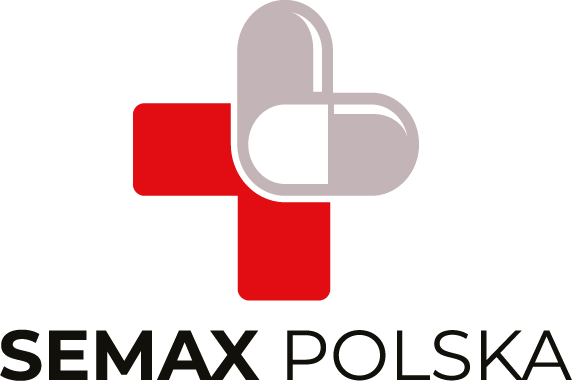Semax: a Peptide-Based, Non-Invasive Alternative to Cerebrolysin
In the world of modern medicine and pharmacology, the search for effective yet safe therapies to improve brain function is never ending. In recent years, Semax, a peptide with potentially revolutionary properties that is sometimes touted as a non-invasive alternative to Cerebrolysin, a well-known drug used to treat various neurological conditions, has attracted particular attention.
What is Semax?
Semax is a synthetic peptide whose amino acid sequence is modeled after a short fragment of ACTH (Adrenocorticotropic Hormone), a hormone produced by the pituitary gland. Displaying a range of brain-beneficial activities, including neuroprotection, antioxidants, and potentially improving memory and concentration, the peptide has a proven effect on stroke.
Semax and Cerebrolysin - comparison
Both Semax and Cerebrolysin are used to improve cognitive function, but their mechanisms of action and form of administration differ. Cerebrolysin, which is a peptide complex of animal origin, requires invasive administration (injections), which can be inconvenient for the patient and is associated with a higher risk of side effects. Semax, on the other hand, is used non-invasively - usually in the form of drops or nasal sprays, which makes it easier to apply and more user-friendly.
A key advantage of Semax is its ability to directly affect the nervous system, so it can effectively support cognitive processes, relieve the effects of stress and improve mood. Additionally, Semax does not exhibit the typical side effects of stimulant drugs, such as hyperactivity or sleep problems, making it an attractive option for those looking for a safe alternative to support brain function.
Although Semax and Cerebrolysin have their own unique advantages and potential applications, the growing interest in Semax as a non-invasive, easy-to-use form of therapy indicates the potential of this peptide in the future development of neuroprotective and nootropic treatment strategies.
Click, to read a professional scientific article on Semax.
What else can help a person interested in Cereborlizine and Semax?
In addition to Semax, there are a number of other substances that are gaining recognition in supportive therapy for post-stroke patients. Eloxipine, Alpha GPC (Alpha-glycerylphosphorylcholine) and Noopept are important components of modern neuroprotective and nootropic pharmacotherapy, offering potential benefits in protecting nerve cells, improving cognitive function and accelerating recovery.
Emoxypine, also known as Mexidol, is an antioxidant that works at the cellular level and can reduce free radical damage, thereby helping to protect neurons from degeneration. It is often used to reduce the effects of stroke, especially in the acute and subacute phases, due to its ability to improve microcirculation and increase the resistance of neural tissue to hypoxia.
Alpha GPC, a precursor to the neurotransmitter acetylcholine, is considered one of the key ingredients in post-stroke therapy due to its potential ability to improve cognitive function, memory and concentration. Acetylcholine is important for learning and memory processes, and supplementation with Alpha GPC may support neuronal regeneration and communication between nerve cells.
Noopept, another nootropic, is characterized by even higher potency than traditional nootropic substances. It works by stimulating the expression of NGF (nerve growth factor) and BDNF (brain-derived neurotrophic factor), which contributes to the growth and survival of neurons. Noopept can also improve cognitive function, memory and learning ability, making it a valuable tool in post-stroke recovery.
Together, Emoxypine, Alpha GPC and Noopept form a powerful team to support neural regeneration and brain function after stroke. Their use in comprehensive therapy can significantly improve the quality of life of post-stroke patients, helping them to regain lost function and increase their chances of a full recovery. However, as with any therapy, it is necessary to consult with a doctor and individually tailor the treatment to the patient's needs and condition.



